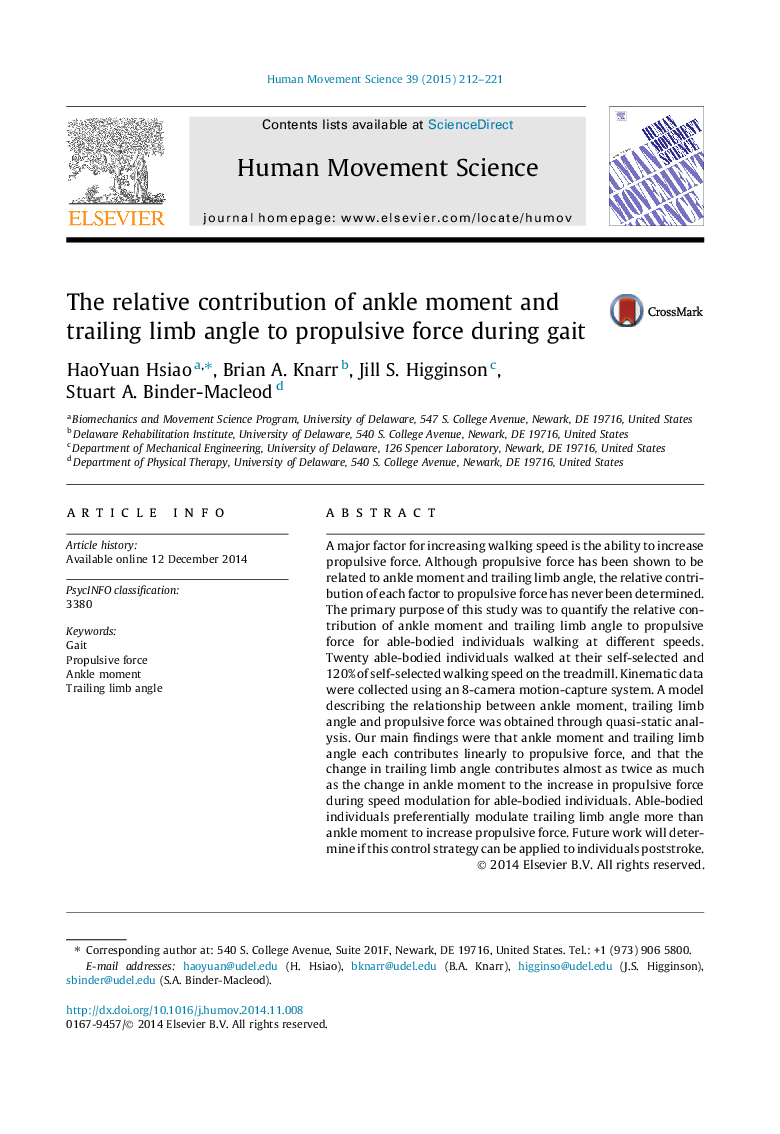| Article ID | Journal | Published Year | Pages | File Type |
|---|---|---|---|---|
| 928301 | Human Movement Science | 2015 | 10 Pages |
•We determine the contribution of ankle moment and trailing limb angle to propulsion.•Ankle moment and trailing limb angle each contributes linearly to propulsion.•Trailing limb angle is the major contributor to increase propulsion during gait.
A major factor for increasing walking speed is the ability to increase propulsive force. Although propulsive force has been shown to be related to ankle moment and trailing limb angle, the relative contribution of each factor to propulsive force has never been determined. The primary purpose of this study was to quantify the relative contribution of ankle moment and trailing limb angle to propulsive force for able-bodied individuals walking at different speeds. Twenty able-bodied individuals walked at their self-selected and 120% of self-selected walking speed on the treadmill. Kinematic data were collected using an 8-camera motion-capture system. A model describing the relationship between ankle moment, trailing limb angle and propulsive force was obtained through quasi-static analysis. Our main findings were that ankle moment and trailing limb angle each contributes linearly to propulsive force, and that the change in trailing limb angle contributes almost as twice as much as the change in ankle moment to the increase in propulsive force during speed modulation for able-bodied individuals. Able-bodied individuals preferentially modulate trailing limb angle more than ankle moment to increase propulsive force. Future work will determine if this control strategy can be applied to individuals poststroke.
